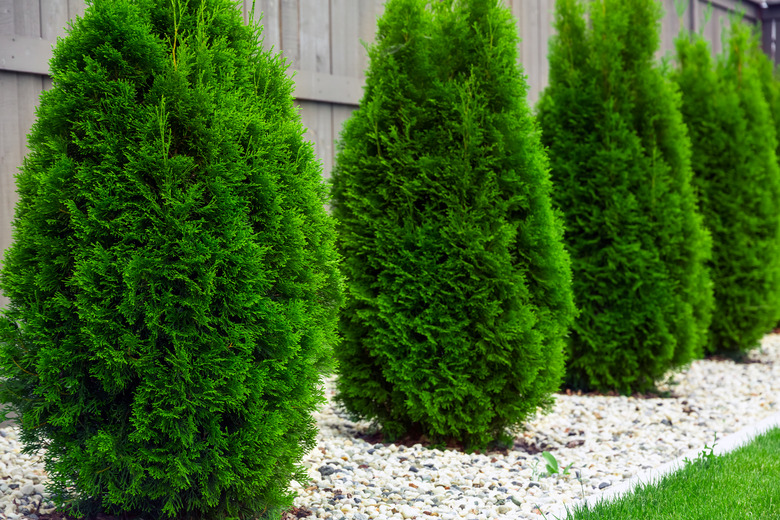Does An Arborvitae Need To Be Topped?
Fast-growing arborvitaes make the short list for best shrub plants for hedges or screens, although they also make outstanding specimen plantings. All are evergreen and attractive, though the size and structure of the plants vary widely between species. Picking the shrub that meets the space requirements is the key to avoiding the urge to top the plant.
Meet the Arborvitae
Any gardener seeking an evergreen for a property hedge has likely considered using American arborvitae (Thuja occidentalis) for its rapid growth and easy-care ways. Native to North America, this Thuja was given the name arborvitae, meaning "tree of life," because it was used medicinally in a variety of ways, including to cure scurvy.
You can identify Thuja species by their flattened, fanlike branches of scale-like needles with a strong, appealing fragrance. They also have thin, mahogany bark and small brown cones with overlapping scales that mature in autumn. In the wild, arborvitae trees grow tall and straight, but various species and cultivars offer great diversity.
Grow an Arborvitae
Although their quick growth habit may be the primary reason gardeners choose arborvitae for the landscape, the fact that very little maintenance is required is a close second. Just plant them in the right site and watch them take off. But take care where you plant them since they will be around a long time. They can live to 1,000 years.
Arborvitae thrive in cooler climates. They are hardy in U.S. Department of Agriculture plant hardiness zones 2 through 7, and should be planted in a site that gets six to eight hours of sun. They also require well-drained soil, ideally moist peat. Avoid dry soil areas or overly windy locations.
While newly planted arborvitae require regular irrigation, once they mature, the trees are quite drought tolerant. Adult trees need only be watered in times of extreme drought.
Prune Your Arborvitae
An arborvitae in the wild develops a tall, rounded silhouette that is both strong and graceful. It usually reaches between 40 and 60 feet tall. Many cultivars have been developed, however, each with its own shape, including globular, pyramidal, columnar, and conical. All benefit from some light pruning to trim or shear needled branch tips. Avoid cutting into branches without needles since this will not result in regrowth.
If you choose an arborvitae with a mature height that matches the needs of your landscape, the topic of topping does not arise. Topping — chopping off the top section of a tree — usually appears as an option when a tree's height becomes a problem. This practice should always be avoided, since it doesn't aid the tree in any way and destroys the natural beauty and form of the shrub.
Trimming an arborvitae to reduce its size is possible if done correctly and can also make the growth more dense. Use a garden pruner to trim back the tips of the arborvitae branches as the tree approaches the desired height. Assuming that you have selected a tree of the appropriate height and breadth for the site, this kind of tip pruning eliminates the need for harsh topping a few years later.
